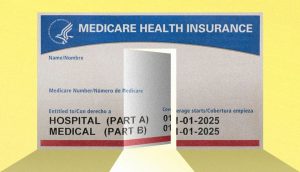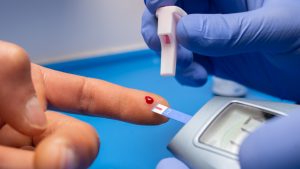Living with type 2 diabetes means taking a proactive role in our healthcare, and one of the keys to this is making smart decisions about what we eat. While navigating the grocery aisle may seem like a daunting task, don’t worry! With a little knowledge and practice, you’ll become a master of food labels and choose options that benefit your health.

Food labels: your treasure map to a healthy diet
Food labels, far from being an indecipherable code, are actually a treasure trove of valuable information that will help you make informed decisions about what you consume. Learn to identify these key elements:
1. Serving size: This often overlooked information is crucial for assessing the food’s real impact on your health. Compare the listed serving size to the amount you usually consume to get a more accurate picture.
2. Calories: Calories are the unit of energy that a food provides. If you are watching your weight, paying attention to this value is essential. Remember that the number of calories you need depends on your age, sex, activity level, and overall health.
3. Nutrients: Look for foods that are rich in fiber, vitamins, and minerals, and low in saturated fat, cholesterol, and sodium. These essential nutrients will help you stay healthy and prevent diabetes-related complications.
4. Carbohydrates: Carbohydrates are the nutrient that has the greatest impact on blood sugar levels. Pay attention to the grams of total carbohydrates and the amount of added sugar. Choosing options with lower carbohydrate content and limiting added sugar will help you control your glucose levels better.
5. Fats: Choose foods that are high in unsaturated fats (such as those found in olive oil, avocados, and nuts) and limit saturated and trans fats. Unsaturated fats are beneficial for heart health, while saturated and trans fats can raise cholesterol and increase the risk of heart disease.
6. Sodium: Excessive sodium intake can raise blood pressure, which in turn can be a risk factor for people with diabetes. Look for foods that are low in sodium to keep your blood pressure under control.
Additional tips to become a label ninja:
Use the percent daily value (%DV): This information tells you what percentage of the daily recommended value of a nutrient a serving of food provides. A 5% or less is considered low, while 20% or more is considered high.
Compare similar products: When comparing different brands or types of the same food, make sure to compare the labels based on the same serving size.
Don’t be fooled by marketing claims: Phrases like “low fat” or “healthy” don’t always mean the food is a good option for people with diabetes. Always check the complete nutritional information.
Consider your individual needs and preferences: There is no one-size-fits-all diet. Adjust the general recommendations to your specific needs, considering your health status, physical activity, and taste preferences.
Fun facts that will surprise you:
Did you know that 1 teaspoon of sugar is equivalent to 4 grams of carbohydrates?
Fiber helps slow down the absorption of sugar into the bloodstream, which keeps you feeling full longer.
Unsaturated fats can help lower LDL (“bad”) cholesterol and raise HDL (“good”) cholesterol.
Choosing potassium-rich foods can help counteract the effects of sodium on blood pressure.
Empower yourself with knowledge and conquer the supermarket!
Reading and understanding food labels is an invaluable skill for anyone with diabetes. By making informed decisions about what you eat, you can better control your blood sugar levels, improve your overall health, and enjoy a full and flavorful life.
Remember: If you have any specific questions or concerns about your diet, consult with a qualified healthcare professional or registered dietitian. They can guide you in creating a personalized eating plan that meets your needs and goals. Take control of your health and become a master of eating!
E4: Your Partner in Mastering Your Plate and Your Health
At E4 Diabetes Solutions, we understand that managing type 2 diabetes requires a multi-faceted approach. Our E4 ALIVE goes beyond just diet. We offer a comprehensive program that incorporates personalized meal plans, stress management techniques, and ongoing support to help you achieve optimal blood sugar control and potentially even reverse your diagnosis.
We also recognize the power of delicious and healthy recipes! Be sure to follow us on Instagram for a constant stream of mouthwatering and diabetic-friendly recipe inspiration.
Remember, taking control of your health starts with mindful awareness. By embracing conscious eating, you can improve your relationship with food, manage your type 2 diabetes effectively, and pave the way for a healthier, happier you!

Type 2 Diabetes: Is It Really Reversible?
A recent National Geographic article [link] explores how type 2 diabetes could be reversible with the right approaches. This condition, which affects millions of people worldwide, has long been considered a chronic and progressive disease. However, recent research challenges this perception and suggests that with lifestyle changes and the right approach, remission is possible. The

How Do GLP-1 Drugs Compare? A Breakdown of Ozempic, Mounjaro, and Trulicity
GLP-1 receptor agonists have revolutionized diabetes management, with drugs like Ozempic, Mounjaro, and Trulicity leading the market. But how do these medications compare in terms of effectiveness, side effects, and patient outcomes? Let’s explore their differences and what they mean for diabetes patients. Understanding GLP-1 Medications GLP-1 receptor agonists mimic a natural hormone that helps

Why Has Medicare Spending on Diabetes Medications Skyrocketed in 5 Years?
In the past five years, Medicare spending on diabetes medications has increased nearly fivefold, reaching $35.8 billion in 2023. This surge has been primarily driven by the growing use of GLP-1 drugs such as Ozempic, Mounjaro, and Trulicity. But what is behind this cost escalation, and how does it affect patients and the U.S. healthcare

The Gut Microbiota and Blood Sugar Control: A Hidden Connection
The human gut is home to trillions of bacteria that play a crucial role in digestion, immune function, and even metabolism. Recent research has revealed a fascinating link between the gut microbiota and blood sugar regulation, shedding light on how the balance of microbes in our intestines can influence diabetes risk and overall metabolic health.

The Dawn Phenomenon: Why Blood Sugar Rises While You Sleep
For many people with diabetes, waking up with high blood sugar levels can be frustrating—especially if they didn’t eat anything overnight. This early-morning spike in blood glucose is known as the Dawn Phenomenon, and it happens due to natural hormonal changes in the body. But why does it occur, and how can it be managed?

The Influence of Red Light on Blood: Can It Improve Diabetes?
Type 2 diabetes is a metabolic disease characterized by insulin resistance and elevated blood glucose levels. In the search for complementary alternatives to improve glycemic control, red light therapy has gained attention due to its potential to enhance circulation, reduce inflammation, and optimize cellular function. But what does science say about it? ✨ What is

